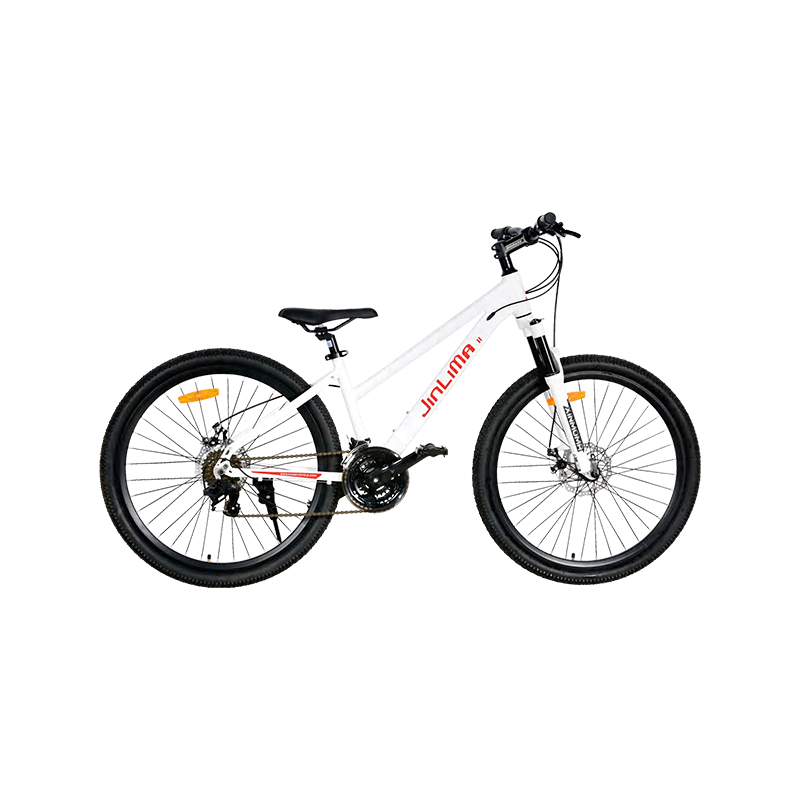When selecting the right suspension system for a mountain bike, several key factors need to be considered based on the terrain and riding style. The suspension system plays a crucial role in optimizing ride comfort, control, and performance, so it's important to match the setup to specific riding needs. Here are the main factors to consider:
1. Terrain Type:
Smooth Terrain (Cross-Country Trails): For smoother trails with minimal obstacles, a hardtail suspension (front suspension only) is often sufficient. This setup provides lighter weight and more pedaling efficiency while still offering some shock absorption for small bumps.
Technical and Rough Terrain (Enduro, Trail Riding, All-Mountain): If the terrain includes larger rocks, roots, and moderate drops, a front and rear full suspension system (also known as dual suspension) is recommended. The rear suspension helps absorb impacts and maintain traction on rough surfaces, allowing for better control.
Very Rough and Challenging Terrain (Downhill, Freeride): For aggressive terrain with big drops, jumps, and technical sections, long-travel full suspension (e.g., 160mm to 200mm of travel) is ideal. A longer travel suspension system absorbs larger impacts, maintains stability, and offers a smoother ride on steep descents.
2. Riding Style:
Cross-Country (XC): Riders focused on speed, endurance, and climbing efficiency will benefit from a shorter travel suspension (typically 80mm to 120mm front and rear). The setup should prioritize low weight, pedaling efficiency, and a more responsive feel on smoother trails. A hardtail (front suspension only) is also a common choice for XC racing.
Enduro and Trail Riding: Riders looking for versatility on varied terrain will benefit from mid-travel suspension (120mm to 160mm). This provides a good balance between descending capability and climbing efficiency. Enduro bikes, which are designed for both steep descents and technical climbs, typically have longer travel on the front fork and rear shock.
Downhill and Freeride: Riders engaging in high-speed descents, jumps, and rough terrain need long-travel full suspension (160mm+). These systems are designed to handle big impacts and provide stability during aggressive descents and jumps. They often feature advanced dampers and shock adjustments to handle high-speed impacts and rough trail conditions.

3. Suspension Travel (Front and Rear):
Front Suspension (Fork Travel): The amount of front suspension travel affects how well the bike handles impacts from obstacles like rocks and roots. Longer travel (120mm-160mm) is typically better for technical riding, while shorter travel (80mm-100mm) is more suitable for smoother terrain and efficiency.
Rear Suspension (Shock Travel): Rear suspension helps with overall stability and comfort, especially on technical descents. The rear shock's travel should complement the front fork's travel. Longer rear travel is better for steep or rough terrain, while shorter rear travel keeps the bike lighter and more efficient for climbing.
4. Suspension Adjustability:
Compression Damping: This controls how the suspension absorbs smaller bumps and large impacts. For riders who encounter varying terrain types, a fork or rear shock with adjustable compression damping (soft for rough terrain, firm for smoother trails) can improve control and performance.
Rebound Damping: This controls how quickly the suspension returns to its original position after compressing. In rough terrain, a slower rebound helps the suspension stay in control, while faster rebound can be beneficial for smoother trails.
Lockout Mechanism: Many mountain bikes feature a lockout mechanism for the suspension fork, especially on hardtails or XC bikes. Locking out the suspension can help improve pedaling efficiency on smoother or uphill terrain by preventing unnecessary suspension movement.
5. Rider Weight and Skill Level:
Rider Weight: Heavier riders generally require more suspension travel and stiffer settings to avoid bottoming out the suspension during impacts. Lighter riders can often work with shorter travel or softer suspension settings for comfort.
Skill Level: Experienced riders may prefer more sophisticated suspension systems with advanced damping controls to fine-tune their ride, while beginners may opt for simpler systems that offer more forgiveness on rough terrain without requiring extensive adjustments.
6. Pedaling Efficiency:
Pedaling Bob: A rear suspension that compresses during pedaling (especially while climbing) can cause energy loss, often referred to as "pedal bob." For riders focused on climbing efficiency, a suspension system with anti-squat features or the ability to lock out the rear shock can minimize pedal bob.
Suspension Platform: Some modern full-suspension bikes feature a suspension platform that improves pedaling efficiency while still offering good absorption for bumps. These systems are particularly beneficial for riders who want both climbing efficiency and comfort during descents.
7. Durability and Maintenance:
Suspension Maintenance: Suspension forks and rear shocks require regular maintenance to keep them working optimally. Riders who put their bikes through more intense use (e.g., downhill or enduro riders) may need a suspension system that’s designed to withstand frequent impacts and has easily accessible maintenance options.
Build Quality: For aggressive riders or those riding in extreme conditions, the durability of the suspension components is key. High-quality, durable suspension systems are built to withstand heavy use, while lower-end systems may wear out more quickly or require more maintenance.
8. Budget Considerations:
High-End vs. Entry-Level Suspensions: Higher-end suspension systems (e.g., Fox, RockShox, or DVO) offer more adjustability, better materials, and improved performance on rough terrain, but they come at a higher cost. Entry-level suspension systems are generally simpler with fewer adjustments and can be a good choice for riders on a budget or those who don’t need the advanced features.


 0
0











 Linhang industry park, Zhuji,
Linhang industry park, Zhuji,  +86-18858280688
+86-18858280688
